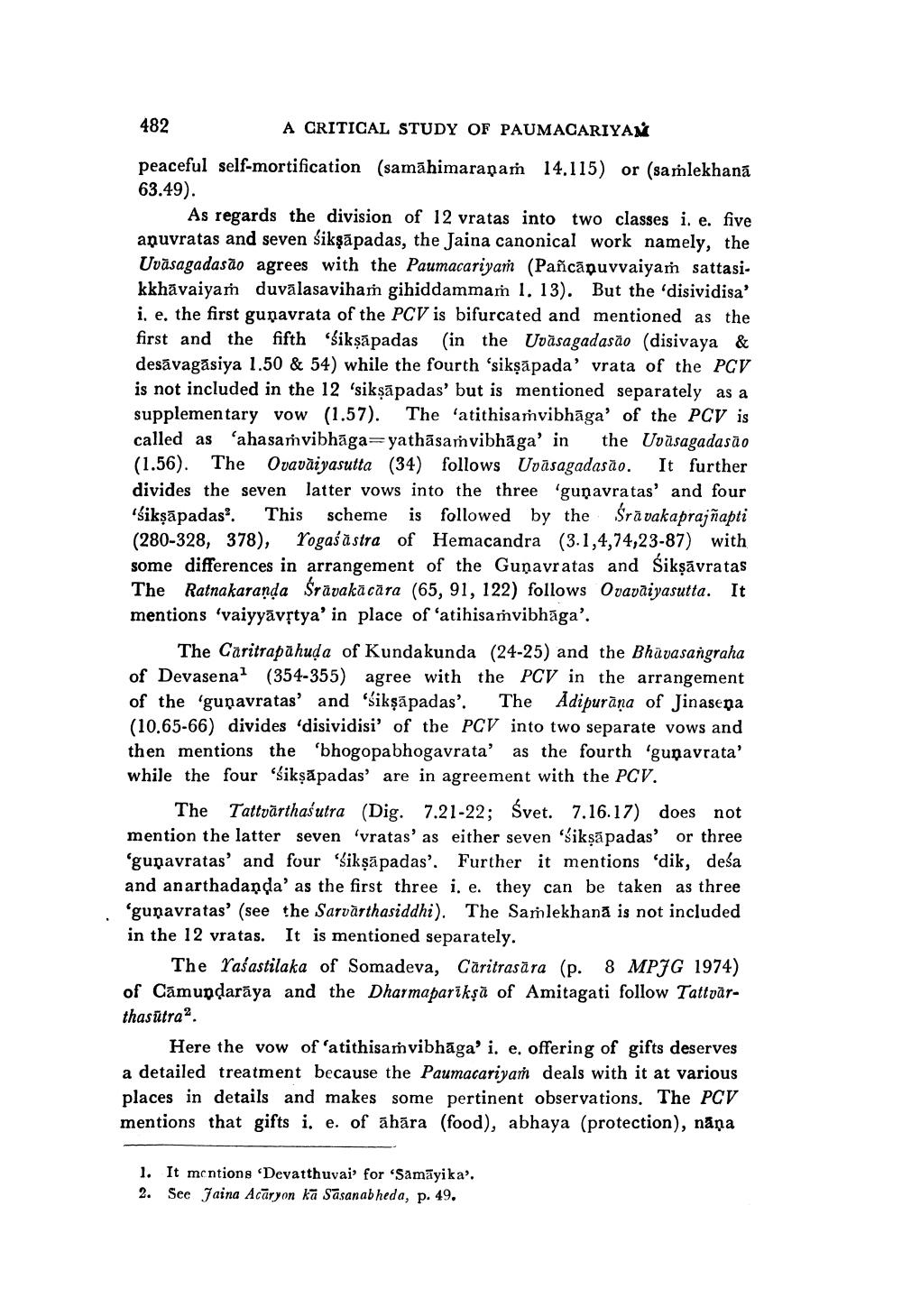________________
482
A CRITICAL STUDY OF PAUMACARIYAN
peaceful self-mortification (samāhimaranam 14.115) or (samlekhana 63.49).
As regards the division of 12 vratas into two classes i. e. five anuvratas and seven sikşāpadas, the Jaina canonical work namely, the Uvāsagadasão agrees with the Paumacariyam (Pañcānuvvaiyam sattasi. kkhāvaiyam duvālasaviham gihiddammam 1. 13). But the 'disividisa' i, e, the first gunavrata of the PCV is bifurcated and mentioned as the first and the fifth Sikşăpadas (in the Uvāsagadasão (disivaya & desăvagāsiya 1.50 & 54) while the fourth 'sikşāpada' vrata of the PCV is not included in the 12 'sikşāpadas' but is mentioned separately as a supplementary vow (1.57). The 'atithisaṁvibhāga' of the PCV is called as "ahasaṁvibhāga=yathāsamvibhāga' in the Uvāsagadasão (1.56). The Ovavăiyasutta (34) follows Uvāsagadasão. It further divides the seven latter vows into the three 'guņavratas' and four 'Sikşāpadas”. This scheme is followed by the Srāvakaprajñapti (280-328, 378), Yogaśāstra of Hemacandra (3.1,4,74,23-87) with some differences in arrangement of the Guņavratas and Sikşāvratas The Ratnakaranda Śrāvakācāra (65, 91, 122) follows Ovavāiyasutta. It mentions 'vaiyyāvștya' in place of 'atihisaṁvibhāga'.
The Caritrapāhuda of Kundakunda (24-25) and the Bhavasangraha of Devasenal (354-355) agree with the PCV in the arrangement of the 'gunavratas' and 'Sikşāpadas'. The Adipurāņa of Jinasena (10.65-66) divides 'disividisi' of the PCV into two separate vows and then mentions the 'bhogopabhogavrata' as the fourth 'gupavrata' while the four "Sikşăpadas' are in agreement with the PCV.
The Tattvārthasutra (Dig. 7.21-22; Svet. 7.16.17) does not mention the latter seven 'vratas' as either seven 'Sikşāpadas' or three 'gupavratas' and four "Sikşāpadas'. Further it mentions 'dik, deśa and anarthadanda' as the first three i. e. they can be taken as three ‘gunavratas' (see the Sarvārthasiddhi). The Samlekhana is not included in the 12 vratas. It is mentioned separately.
The Yaśastilaka of Somadeva, Căritrasāra (p. 8 MPJG 1974) of Camupdarāya and the Dharmaparikșă of Amitagati follow Tattvārthasūtra.
Here the vow of 'atithisaṁvibhāga' i. e, offering of gifts deserves a detailed treatment because the Paumacariyan deals with it at various places in details and makes some pertinent observations. The PCV mentions that gifts i. e. of āhāra (food), abhaya (protection), nāņa
1. It mentions Devatthuvai' for 'Samāyika'. 2. See 7 aina Acāryon ka Sasanabheda, p. 49.




